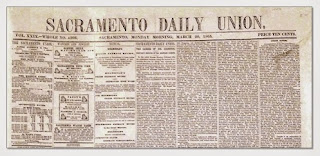What percentage of people in
the U.S. do you think own their own home? Has that number gone up or down in
the last 30 years? What age group owns their home more than any other? What
states have the highest and lowest home ownership rates, and how does the U.S.
measure up against the rest of the world?
 2. Home ownership was
at an all-time high of 69.2% in 2004, well before the credit bubble burst in
2008.
2. Home ownership was
at an all-time high of 69.2% in 2004, well before the credit bubble burst in
2008.
When it comes to
real estate, perception sometimes pushes consumer behavior more than
facts. So these are some of the questions we set out to answer as we crunch the
numbers on home ownership. You may be surprised what we found!
We combed through numerous
articles, reports and credible sources like the U.S. Census Bureau, Pew
research reports, CNN, and Realtor.org to come up with these 20 interesting and
illuminating statistics:
1. The U.S.
homeownership rate, as per Q1 of 2015, is 63.7%, the lowest it’s been since
1990.
 2. Home ownership was
at an all-time high of 69.2% in 2004, well before the credit bubble burst in
2008.
2. Home ownership was
at an all-time high of 69.2% in 2004, well before the credit bubble burst in
2008.
3. To put it in
perspective, the lowest point of home ownership was in 1960 and 1961 in the 62%
and change range, but it’s never dipped anywhere near 62% again.
American home ownership
rates:
1960 62.1%
1965 63.3%
1970 64.2%
1975 64.6%
1980 65.6%
1985 63.9%
1990 63.9%
1995 64.7%
2000 67.4%
2005 68.9%
2009 67.4%
4. The median value of
a home has risen every decade throughout U.S. history since 1940. Even though
home values took a temporary hit with the real estate crunch from 2008-2010,
the median value was at an all time high as of 2010, at $179,900.
5. Out of the 45 top
countries, the U.S. sits #34 for home ownership rates.
Surprisingly, Romania has a
96.6% homeownership rate and Lithuania 91.9%, among many other Eastern European
countries at the top of the list. 90% of people in China own their own home,
India 86.6%, Russia 84%, Mexico 80%, Iceland 77.3%, Brazil and Italy 74.1%,
Sweden 70.1%, Canada 69%, Australia at 67%, and the United Kingdom 66.7% right
above the U.S., among others.
6. Of all U.S. homes,
exactly two-thirds, 66.9%, are owner-occupied, and the others are rentals.
7. The U.S. counties
with the highest average home values are:
Manhattan, NY $812,300
Marin, CA $759,300
San Francisco, CA $737,300
San Mateo, CA $710,100
Teton, WY $705,600
8. The U.S. counties
with the lowest average home values are:
Lechter, KY $56,900
Willacy, TX $50,500
Coahoma, MS $54,700
Harlan, KY $54,400
McDowell, WV $39,000
9. Of adults 35 and
younger, 36% own their own home.
35-44 years old: 59.1%
45-54 years old: 70.1%
55-64 years old: 76.6%
65+: 80% own a home!
10. Every state in the
U.S. has a home ownership rates over 50%.
11. The states with
the highest home ownership rates:
West Virginia 76.2%
Michigan 74.9%
New Hampshire 74.2%
Delaware 73.8%
Maine 73.3%
12. The states (and
district) with the lowest home ownership rates:
Hawaii 56.7%
Nevada 56.2%
California 54%
New York 53.8%
District of Colombia 45.3%
13. New homeowners
purchase more products and services in the first six months after moving than
an established resident spends in a two-year period.
14. The housing sector
directly accounted for approximately 14 percent of total economic activity in
2009, but that has fallen dramatically. Still, about 40 percent
of monthly consumer expenditures are housing related.
15. Today, the average
size of a home is 2,224 square feet. Compare that to the average
size of 1,650 square feet in 1978!
16. With all of that
extra room, do we have bigger families and more people staying in each
household? Nope! These days, the average
family size in a household is 3.15, but back in 1978 it was bigger, with 3.33
person per household!
17. 2012 Pew survey
found that 86 percent of Americans now believe the key to a middle class life
is a secure job, and only 45% say the same about owning a home. in 1991, 70% of
respondents in a CNN/Time/Yankelovich Partners poll said home ownership was
essential to membership in the middle class membership, while only about 50%
said it was a white-collar job.
18. A recent survey
states that 51% of people said the bust did not change their willingness to buy
a home and an additional 27% said it actually made them more likely to do
so. That’s about 78% of the population who want to hold keys to
their own front door.
19. 86% of those
surveyed, list the income-tax benefits of owning a home as a big reason to
buy. Being able to choose a good school system for their kids,
privacy, and being free to fix up their home as they wish were also important
factors.
20. Nearly two-thirds of people surveyed still believe
purchasing a house is a safe investment. In fact, 81% of those surveyed either
currently own a home and want to keep being homeowners in the future, or
currently rent but plan on buying within the next ten years.














